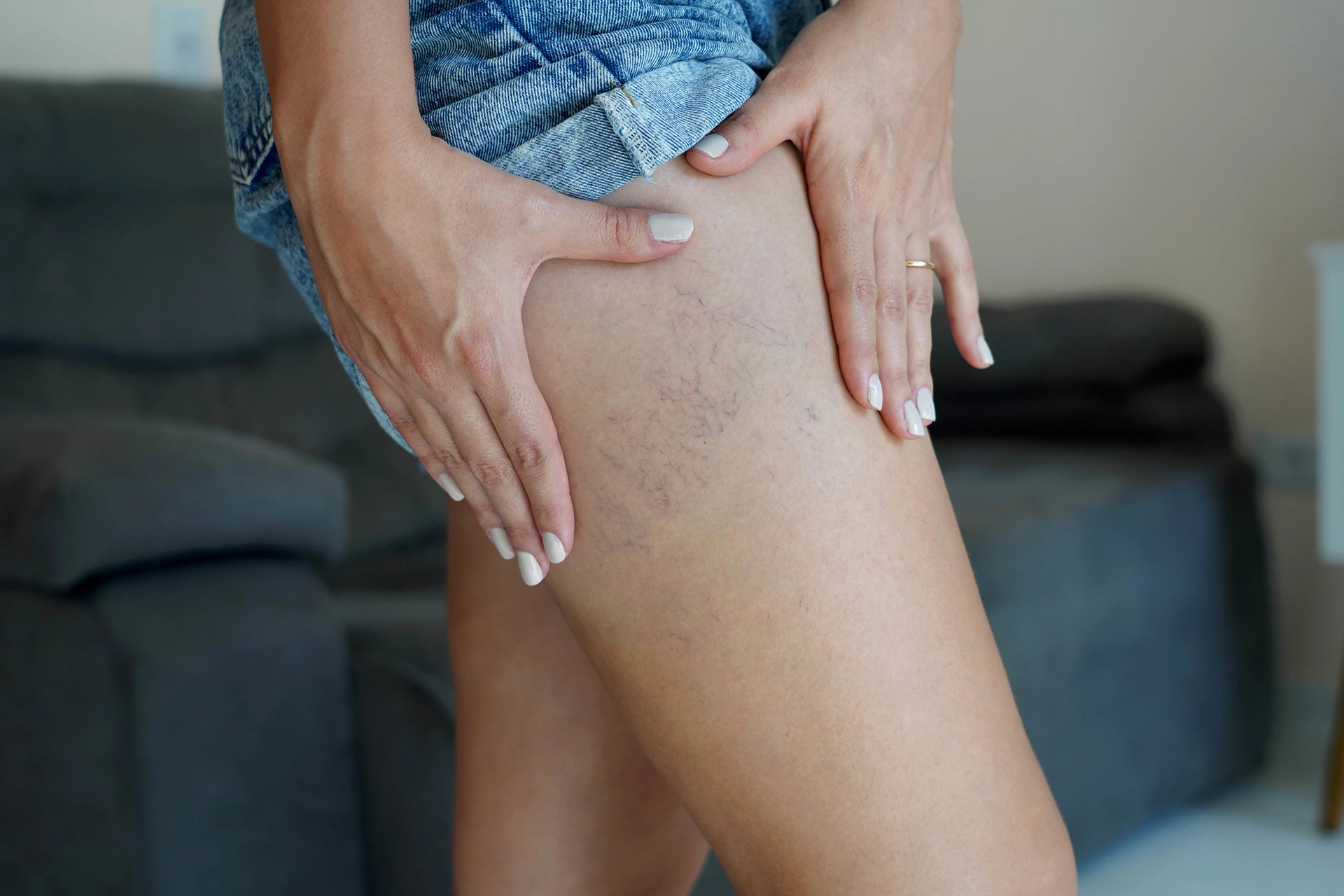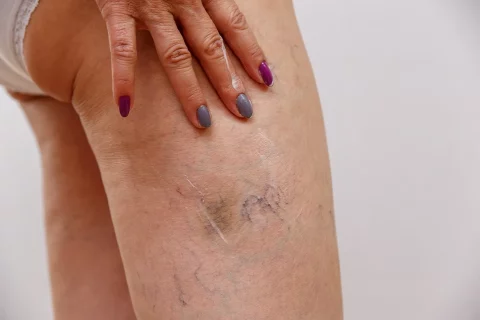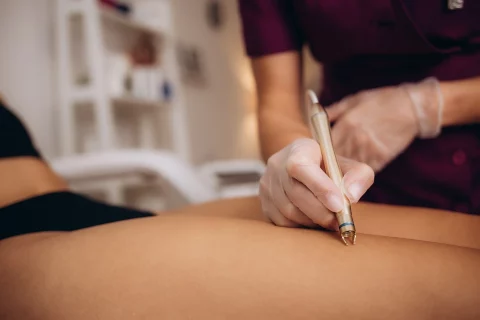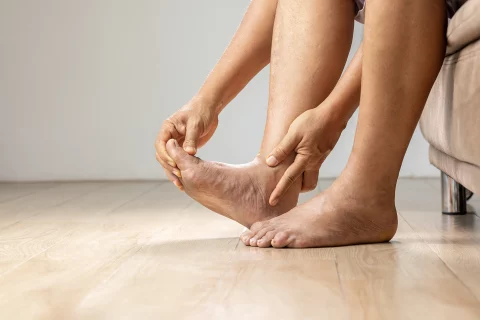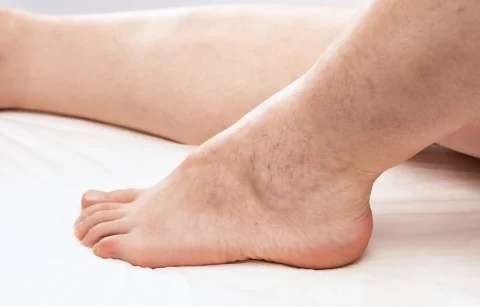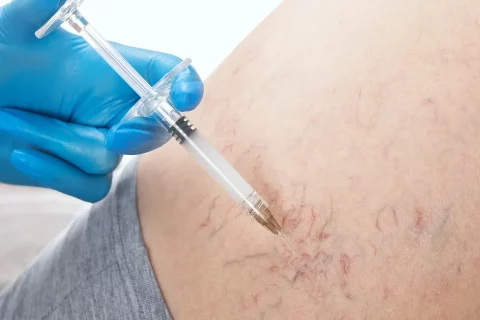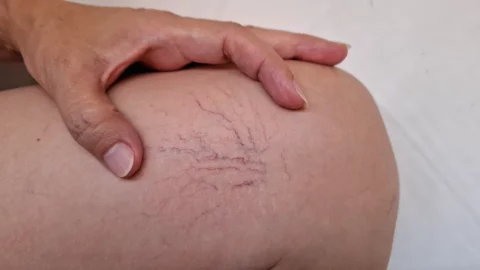More Than Meets the Eye: When Harmless Looking Spider Veins Signal Something Sinister
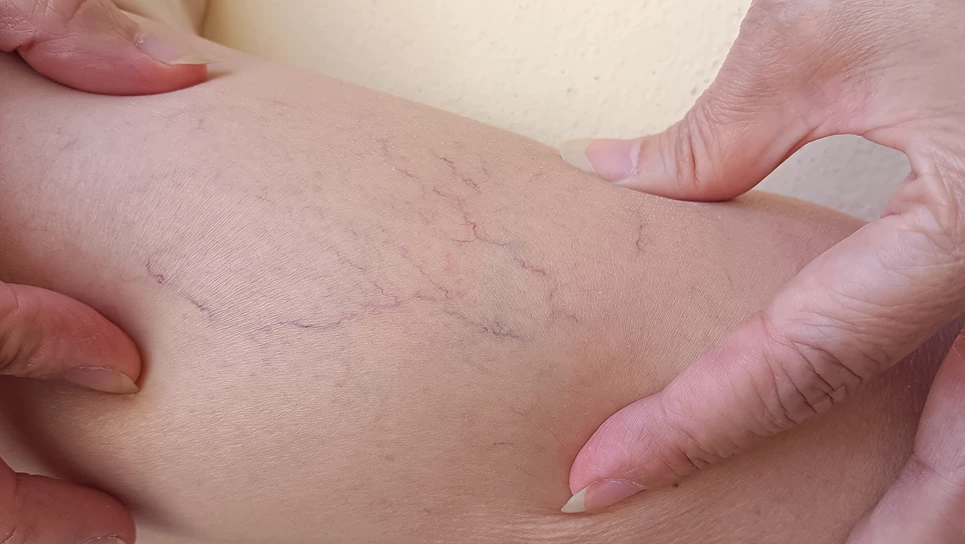
You should worry about spider veins when they start spreading, get worse, or cause pain, swelling, or other issues. See your doctor right away if your spider veins concern you.
You glimpse down at your bare legs and notice fresh spider veins spreading across your skin like crimson spider webs. Besides marring your legs with their spindly presence, they seem harmless enough at first glance. However, looks can be deceiving. These tiny tangled threads may provide subtle clues that something is amiss deeper within your veins.
Much like how headache pain can indicate a brain tumor, or how shortness of breath can signal heart failure, spider veins often betray insidious venous disease lurking below the surface. Don’t let their small size and creepy-crawly appearance deceive you – spider veins can be signposts for potentially serious underlying dysfunction requiring medical intervention.
Living with unwanted veins is a thing of the past, when you can simply schedule a free consultation with Vein Center Doctor and find your ideal solution today.
What are Spider Veins?
Spider veins, also known as telangiectasias, are tiny dilated blood vessels that develop close to the surface of the skin. They get their name from their spider web-like appearance. Spider veins are usually red, blue, or purple and can look like tree branches or networks.
While spider veins don’t always cause symptoms, some people experience a mild burning or itching sensation. Spider veins can develop on the legs, ankles, and feet but may also appear on the face and other areas of the body.
Schedule a consultation with our vascular specialists at The Vein Center Doctor to determine if those pesky spider veins on your legs are a sign of compromised vein health. Call us today
Why are Spider Veins a Common Concern?
Spider veins are extremely common, affecting over 22 million women, and 11 million men in the United States. There are several factors that can increase your risk of developing spider veins:
| Risk Factor | Explanation |
| Genetics | A family history of spider veins does increase the risk of developing them, with studies noting that up to 90% of individuals with spider veins have relatives who also have them. |
| Age | The likelihood of developing spider veins increases with age due to the loss of elasticity in veins. |
| Gender | Women are indeed more likely to develop spider veins, attributed to hormonal factors, especially during pregnancy and menopause. |
| Sun Exposure | Prolonged sun exposure can lead to spider veins, particularly on the face, as UV damage can weaken blood vessels. |
| Weight | Carrying excess weight does place additional pressure on the veins, contributing to their development. |
| Lifestyle Factors | Jobs or activities that require prolonged standing or sitting can exacerbate vein issues, as can a lack of movement |
Are Spider Veins a Sign of Something More Serious?
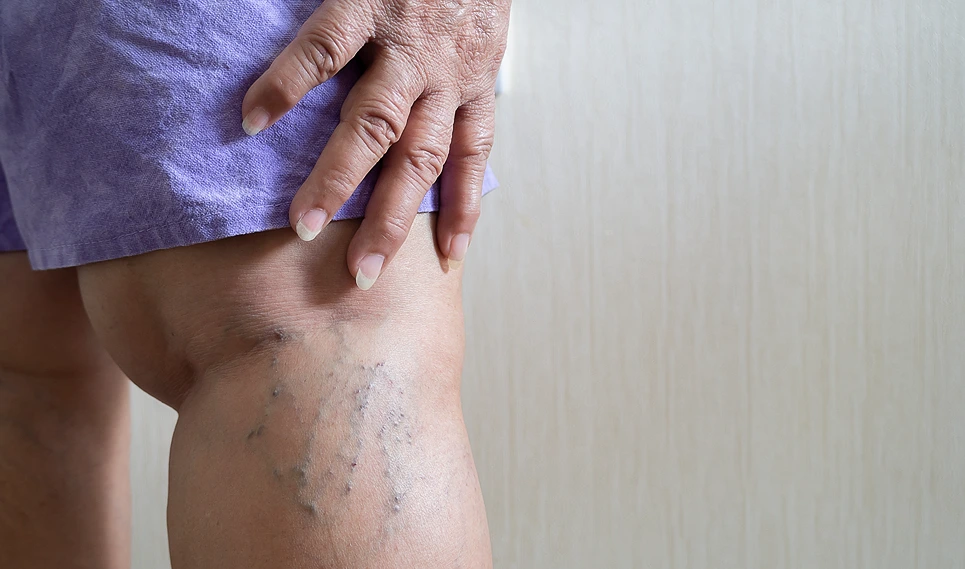
For the most part, spider veins don’t pose any serious health risks. They are usually just a cosmetic nuisance. However, in some cases, spider veins can indicate venous insufficiency or signal an underlying circulatory issue.
It’s a common misconception that spider veins are only superficial. In fact, they are often connected to the deeper venous system. If the deeper veins aren’t functioning properly, it can manifest as spider veins or varicose veins on the surface.
According to the American Venous Forum, spider veins can serve as an external indicator of compromised vein health. Patients with spider veins have underlying venous insufficiency.
Venous insufficiency means the valves inside your veins aren’t working effectively to pump blood back to the heart. Faulty valves cause blood to pool or leak backwards, which enlarges the veins and leads to spider veins.
This dysfunction of the venous system is known as chronic venous insufficiency (CVI). It’s estimated that 2-5% of adults have advanced CVI. Spider veins may be one of the first warning signs of CVI.
When Should I See a Doctor About Spider Veins?
While spider veins themselves aren’t dangerous, they can sometimes progress or be accompanied by other symptoms that warrant medical evaluation. Contact your doctor if you notice:
- Spreading Spider Veins: Rapidly emerging or increasing spider veins may indicate underlying issues, and should prompt a consultation with a doctor.
- Varicose Veins: The presence of larger, bulging veins could signify deeper venous problems, warranting further evaluation.
- Pain, Aching, Burning: While mild discomfort is common, worsening symptoms could signal a more serious condition that requires medical attention.
- Swelling of the Ankle or Leg: Fluid buildup or inflammation in the legs can be a sign of venous insufficiency or other circulatory issues.
- Discolored Skin: Reddish or purplish skin around the ankles may indicate chronic venous insufficiency and should be evaluated.
- Leg Heaviness or Fatigue: Feelings of tiredness or heaviness in the legs can be associated with venous problems.
- Leg Cramps: Frequent muscle cramps, particularly in the calves, may be related to venous issues.
- Itching Skin: Persistent itching around spider veins can be a symptom of underlying venous problems.
- Bleeding Veins: Excessive bleeding from veins after injury is a serious concern and should be addressed immediately.
Catching venous insufficiency early allows for treatment to prevent complications like leg ulcers, bleeding, phlebitis, and thromboembolism. A vascular specialist can determine if your spider veins are troublesome.
If you’re experiencing any of the 9 warning signs outlined, pick up the phone now and book an appointment with the experts at The Vein Center Doctor to get to the root of your spider vein troubles
Can Spider Veins Turn Into Varicose Veins?
Spider veins and varicose veins are closely related – they both stem from venous insufficiency. Without intervention, there is a possibility that small spider veins will develop into larger varicose veins.
Varicose veins arise from weakened valves and blood vessel walls in the superficial veins, which are close to the skin’s surface. They appear as twisted, knotted veins and can be painful. Varicose veins are a more advanced stage of venous insufficiency.
Several factors make it more likely for spider veins to progress into varicose veins, including:
- Family history
- Age
- Prolonged standing
- Obesity Multiple pregnancies
- Hormone changes
Making healthy lifestyle choices can lower your risk for varicose veins. Losing extra weight, exercising regularly, avoiding prolonged standing, and wearing compression stockings are beneficial. Medical procedures can also stop spider veins from worsening.
Do Spider Veins Increase the Risk of Blood Clots?
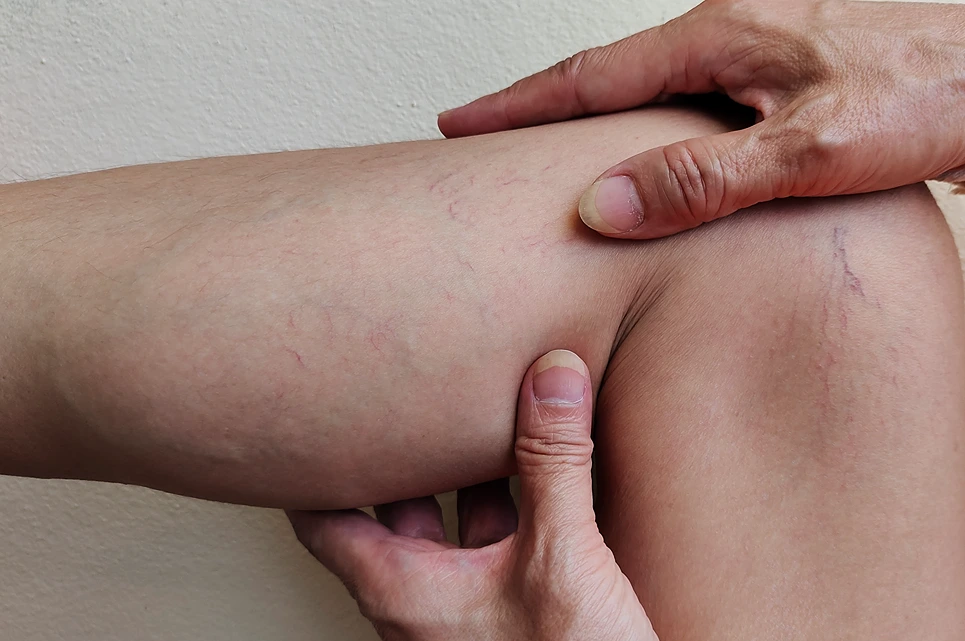
While spider veins themselves don’t directly cause blood clots, the venous insufficiency behind them does increase clotting risk. Blood pools in the veins when valves are faulty. This stagnant blood is more prone to developing abnormal clots.
Having spider veins may mean you have a higher risk of deep vein thrombosis (DVT) in the legs. DVT is a blood clot that forms in a deep vein, often in the calf or thigh. Parts of the clot can break off and travel to the lungs, causing a life-threatening pulmonary embolism (PE).
Those at higher risk for DVT and blood clots include:
| Older Adults | The risk of blood clots increases significantly with age, particularly after 60. |
| Overweight Individuals | Excess weight can put additional pressure on leg veins, increasing the risk of clot formation. |
| Pregnant Women | Pregnancy raises the risk of blood clots due to hormonal changes and increased blood volume. |
| Estrogen Users | Hormonal birth control and hormone replacement therapy can elevate the risk of blood clots due to the effects of estrogen on blood vessel health. |
| Family History | A genetic predisposition to clotting disorders can increase the risk of developing blood clots. |
| Injuries/Surgeries | Trauma to the veins or recent surgeries can promote clotting. |
| Cancer Patients | Certain cancers can increase the production of clotting factors in the blood. |
| Smokers | Smoking damages blood vessels and can impair circulation, raising the risk for blood clots. |
Preventive measures like staying active, maintaining a healthy weight, wearing compression stockings, and quitting smoking can decrease your chances of developing a DVT. Prompt spider vein treatment also reduces the risk.
Are There Home Remedies for Spider Veins?
Many people try home treatments first to get rid of spider veins naturally before considering medical procedures. Some of the most popular remedies include:
- Apple Cider Vinegar: Widely touted for its potential benefits, apple cider vinegar is believed to improve circulation and may help reduce the appearance of spider veins when applied topically. Users often apply it directly or use it in a compress.
- Witch Hazel: This astringent is commonly used to temporarily shrink veins and may provide symptomatic relief. Its application as a toner or cream is popular among those seeking natural remedies.
- Horse Chestnut: This herbal extract is thought to strengthen veins and improve tone. Some studies suggest it may help with symptoms of chronic venous insufficiency.
- Butcher’s Broom: This herb is believed to aid venous circulation and valve function. It is available in capsule form and may help with symptoms related to venous insufficiency.
- Compression Stockings: These are well-documented in their effectiveness for improving circulation and reducing symptoms associated with spider veins. They help compress the veins, promoting better blood flow.
- Exercise: Regular aerobic exercise is beneficial for overall venous health and can improve circulation, which may help prevent the worsening of spider veins.
- Elevating Legs: Raising the legs above heart level can help improve blood flow and reduce swelling, making it a simple and effective home remedy.
Home treatments may help temporarily reduce the appearance of spider veins, but medical procedures typically produce better results.
Try proven medical procedures over home remedies for superior spider vein removal – contact The Vein Center Doctor to learn about advanced treatments that deliver real results
What are the Treatment Options for Spider Veins?
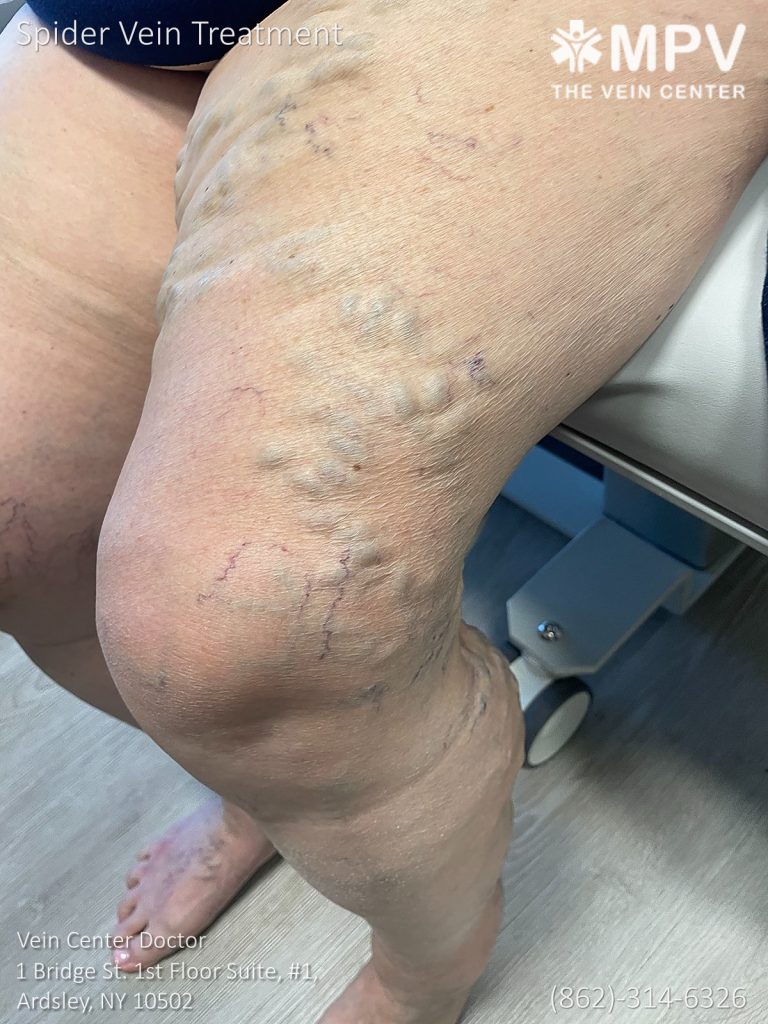
Advanced vein treatment procedures provide the most effective option for eliminating spider veins, such as those offered by the Vein Center Doctor. Minimally invasive treatments can deliver lasting improvements by targeting the problem at the source.
1. Sclerotherapy
This is considered the gold standard treatment for spider veins. It involves injecting a sclerosant solution directly into the affected veins, causing them to collapse and eventually fade away as the body absorbs them. Sclerotherapy is minimally invasive and very effective.
2. Radiofrequency Ablation (RFA)
This procedure uses radiofrequency waves to generate heat, which causes the vein walls to collapse and seal shut. The blood is then rerouted to healthier veins. RFA is an excellent option for eliminating spider veins and improving symptoms.
3. Laser Treatment
Intense pulses of light are used to damage and destroy spider veins. Each burst of energy targets the vein wall, causing it to disintegrate and disappear over time.
4. VenaSeal
A medical-grade adhesive is injected into the vein through a tiny catheter. As the adhesive hardens, it causes the vein to collapse and close. This redirects blood flow to healthier veins
For the best outcomes, a combination approach is often used. Treatments are tailored to each patient and target the underlying venous insufficiency. This prevents the recurrence of spider veins.
Conclusion
For the most part, spider veins are a harmless cosmetic concern rather than a medical issue. However, in some cases, they may indicate compromised vein health that requires treatment to prevent complications.
See your doctor promptly if your spider veins are worsening or accompanied by pain, swelling, itching or other bothersome symptoms. Catching venous insufficiency early allows for targeted procedures to eliminate spider veins before they progress.
At the first sign of worsening spider veins, pick up the phone and call The Vein Center Doctor – our vascular specialists provide early intervention to stop venous insufficiency in its tracks.
Dr. Sood at Vein Center Doctor is always happy to offer free consultations to anyone looking to understand their vein issues. Don’t spend another day wondering how to make those visible veins go away. Call us at 862-227-1143 today!

